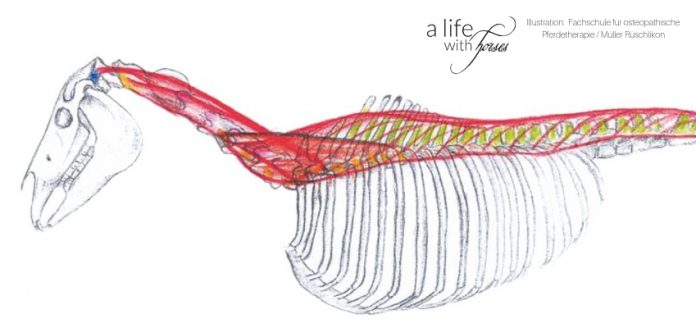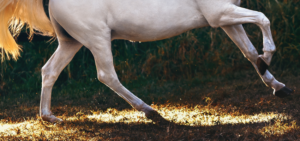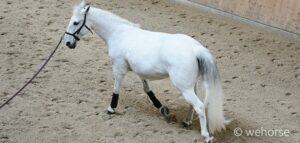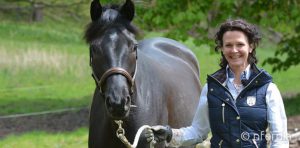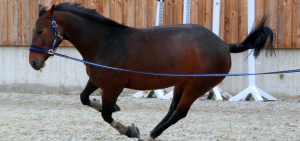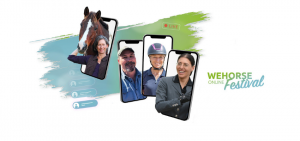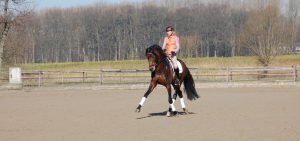I bet you’ve asked yourself the same question a hundred times. “How can I help my horse to build bigger muscles?” Whoever wants to ride wants to do so on a horse with a well-trained musculature. Because we all know that this is a huge factor in maintaining long term health and soundness.
Summary
- What are the four golden rules to help your horse build back muscles?
- What is training stimulus?
- What are the common sources of error?
- How to build back muscles?
What are the four golden rules to help your horse build muscles?
- The diversity of training is the key to building up the muscles of your horse! You need a good sequence of training days that alternate between training stimulus, exercising without the weight of a rider, or recovery days. Neither the direct repetition of training stimuli, nor too many breaks or easy days lead to the muscle growth of your horse.
- A good technique does it! The hardest point: Only physiologically suitable exercise gives the horse muscle growth where we want it. Unfortunately, there is no shortcut for this. To quote the famous German trainer Paul Stecken `Correct riding is enough´. That this may be difficult is not a problem; riding is lifelong learning. You collect a lot of knowledge from which your horse may profit directly along the way.
- Engage your horse mentally!! The most ideal physical training program is not worth much if your horse is not mentally involved. Pay attention to his signals, even small ones, which might show unhappiness or stress and prevent your horse from building muscles! There is always a reason.
- Keep in mind: It is never only about muscle building, but also about the tendons, ligaments and fasciae of your horse.
What is training stimulus?
Your horse won’t build muscles without training stimulus. Setting a training stimulus means that you work up to or slightly over the performance limit. Of course, this does not mean that you let your horse gallop to the point of exhaustion! Rather, you work into the zone that is clearly strenuous.
Hobby riders tend to do this too little! Most people who ride their horses for pleasure tend to do too little rather than too much.
What are the common sources of error?
1. Too little intensive training
We all know that managing a horse while having a limited amount of time can be challenging. Keep in mind that enough training is necessary for your horse to develop back muscles!
2. Too much intensive training and too many repetitions
Some riders sit on their horses for far too long and duly practice the same thing day in, day out, with the same intensity. `The riders are then surprised that the horses become more and more tired and heavier,´ explains German dressage trainer Claudia Butry. `They are surprised that their muscles are not getting bigger and bigger, in spite of training so much´. If you do too much, your horse won’t gain more muscle mass. Your performance will also be reduced by this overtraining and your horse is likely to lose his motivation.
How to build back muscles?
The first thing to think about is: which muscles of the horse’s back are involved? I bet half think of the trapezius first? Not wrong, but fairly overrated.
What is the trapezius muscle?
The trapezius muscle is a flat, thin muscle that lies directly under the horse’s skin. But it’s not much wider than one or two fingers, even in a very well-trained horse. The first part runs from the neck to the side of the shoulder blade; the second part runs from the shoulder blade to the thoracic vertebrae. Its role is to move and align the shoulder blade.
Why is it so important to have a fitting saddle?
The horse’s trapezius muscle takes up several hand widths on the surface of the saddle area and it is therefore simply nonsense to look for a saddle that won’t come in contact with this muscle. It’s not just the trapezius muscle that atrophies from the wrong saddle! It will, of course, but other muscle groups are much more affected. So it’s a little bit more complicated than just the trapezius! The following muscles of the horses back are affected: parts of the latissimus, the broad back muscle, the serratus dorsalis, the spinalis – this is the muscle near the spine that also forms the withers and parts of the longissimus dorsi and the iliocostalis in the lowest muscle layer – there are several muscles that run under the trapezius muscle! A bit confusing, perhaps? OK, let’s go slowly: The longissimus dorsi is the longest muscle in the horse’s body. It runs from the atlas behind the head to the ilium at the croup; this can also be seen in the illustration on this page. In order to check, whether your saddle fits correctly, you can use these ten steps to find out!
In riding horses, pay attention to these muscles
Two muscles that riders like to feel and examine but are often unable to name are the musculus spinalis and the musculus serratus. The more strongly these are trained, the more pronounced the withers will appear. When riders discover that the region in which the bony part of the withers is embedded has gained muscle mass, it’s due to these two muscles. The M. spinalis runs on both sides of the spinal column and is one of the deep muscles of the horses back. The M. serratus is a huge muscle that originates from the first to ninth rib and from the third to seventh cervical vertebrae. It is attached to the inside of the upper part of the shoulder blade. M. Serratus is one of the most important muscles fot the horse as it is responsible for supporting and holding up his chest and ripcage, meaning it is the connection between the shoulder and barrel. The horse has – and this is a special feature – a free-supporting shoulder blade which is attached exclusively with muscles and is not held by a clavicle, as is the case with us humans, for example. With horses, there is no bony connection between the forearms and the torso.
How to fight load-bearing burnout?
This is exactly why it is so important that these muscles are well trained in riding horses. If not, there’s a risk that the horse will tend to let his chest drop down, placing excess weight on the forelegs and at some point will show signs of `load-bearing burnout´. Certainly something that every rider wants to avoid. So this is why it’s more than just the trapezius muscle!

